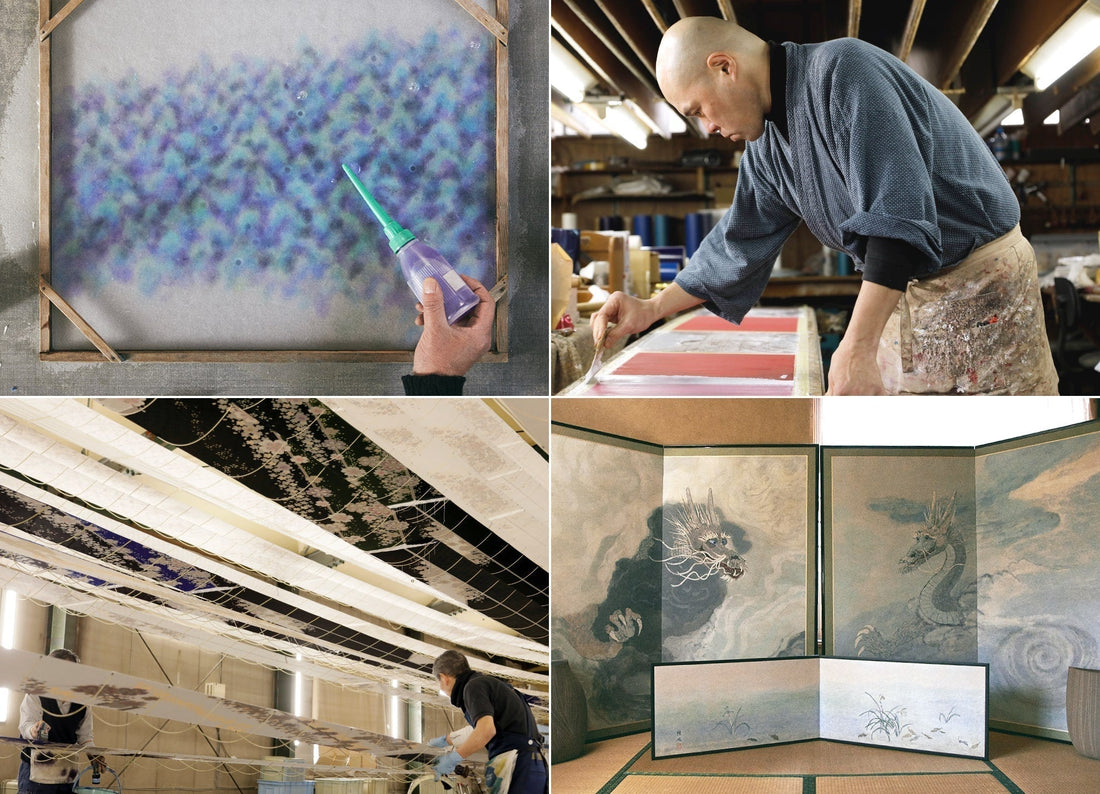
Washi — Japan’s 1,400-Year-Old Paper Tradition
Washi—literally “Japanese paper”—has been crafted in Japan for over 1,400 years using the traditional nagashi-zuki method. While papermaking was introduced from China, Japan evolved it into a uniquely refined craft, shaping it for religious, artistic, and daily uses across the centuries.
From sutras in the Nara period to court poetry in the Heian era, to samurai armor and tea tools in the Kamakura period, washi’s role evolved with the times. By the Edo period, it became essential in everyday life—seen in ukiyo-e prints, umbrellas, and shoji screens.
Washi is made from the inner bark of kozo (paper mulberry), mitsumata, or gampi shrubs. Unlike Western wood pulp, washi fibers are exceptionally long (up to 10 mm) and are layered in a random mesh, producing paper that is remarkably strong, highly absorbent, and feather-light.
Why Is Washi Valuable?
Historical Continuity
Used by monks, nobles, merchants, and artisans for over a millennium, washi is not only a material—it’s a thread running through Japan’s cultural fabric.
Strength Without Weight
Thanks to its long fibers and randomized weave, washi achieves an ideal balance of toughness and delicacy. A single 0.1 mm sheet is strong enough to be soaked, twisted, and stretched without tearing.
Moisture Absorption
The random mesh structure gives washi a high degree of absorbency, making it ideal for calligraphy, packaging, and restoration—where it must bond gently but firmly with other materials.
Naturally Sustainable
Handmade with bark fibers and minimal chemical use, washi is eco-conscious by tradition. Its low output and artisanal nature preserve its rarity and authenticity.
Modern Uses Beyond Calligraphy
Lighting & Interiors – Shoji doors and lamp diffusers harness washi’s unique light-scattering to create warm ambiance.
Luxury Packaging – Hermès and other brands use gold-specked washi for gift boxes and stationery, adding tactile elegance.
Technology – Sony's concept e-paper watch used ultra-thin washi lamination to create a textured surface without added weight.
Restoration & Conservation – Washi is prized by global museums to restore art, thanks to its durability and acid-free purity.
